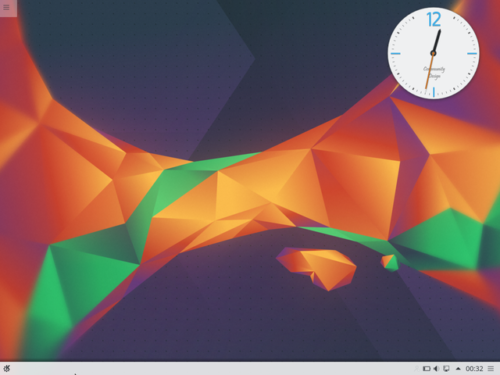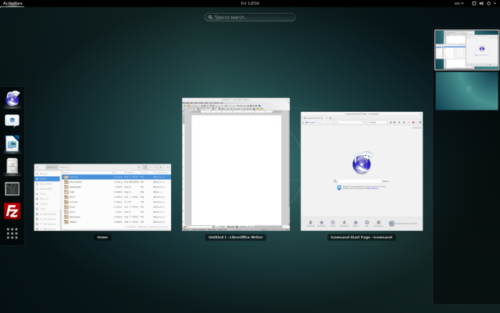Differences between Kubuntu and Debian
Introduction
This article describes the comparable differences between Kubuntu and Debian, including a collection of technical opinions on utilizing each program. Note this does not supplant any program specifications.
Jargon Buster
The following is a short explanation of terms used in the article:
| Linux | An operating system to manages all of hardware resources associated with your computer.[i] |
| Ubuntu | Ubuntu is an open source software operating system.[ii] |
| Kubuntu | Kubuntu is an Ubuntu-KDE Linux distribution package that provides an operating system and desktop environment. |
| Debian | Debian is a free operating system that uses the Linux or FreeBSD kernel.[iii] |
| Distribution (distro) | A collection of software to deliver an operating system with a desktop environment and user applications. |
| Repository (repo) | Additional software files available for download and installation. |
| Package Manager | Allows users to browse repositories and add, or remove software. Most distributions have a package manager tool to safely remove, install and update the software. |
| KDE | KDE (Kool Desktop Environment) is open source software delivered as a desktop environment.[iv] |
Background

Kubuntu 16.04 Desktop
Kubuntu
UNIX type operating systems have different graphical displays, depending on user preference. Launched in 2004, Kubuntu, which is based on Debian, was developed as a modern distribution with regular updates to enhance user friendliness.
Previously, Kubuntu was under the Canonical company umbrella but recently moved to community-supported software. Kubuntu is a free, open-source alternative to Windows or Mac and is the KDE edition of Ubuntu; that is, a user friendly operating system based on Ubuntu and KDE.
Kubuntu is not placed as a better version of Ubuntu – it’s simply just different. Its’ infrastructure replaces the Unity shell and GNOME infrastructure, used by Ubuntu.
The Kubuntu desktop can be installed on Ubuntu, using the Kubuntu desktop package. Deviations of Ubuntu is called a flavor, and a list of the Ubuntu Flavors can be found on the Ubuntu wiki.[v]

Debian 8.2 with GNOME
Debian
Debian is also a free distribution, but it is one of the older and more popular distributions, which started as a community-supported project in 1993 and continues on this model today. The advantage of its longer history, is the stability and solid support widely available for the product.
So while it may be more dated to use Debian, it is very stable and highly secure. The latest release of Debian (Debian Experimental), is currently regarded as unstable i.e. in testing.
Debian is not as slick as Kubuntu and requires more Linux knowledge and experience to utilize the application to its fullest. It is more text-oriented without the focus on user design experience, although it does provide a GUI (graphical user interface), GNOME as the default, but utilities are mostly run from the terminal (command line).
Pros and Cons
When comparing Kubuntu and Debian, there are no massive underlying differences, as Kubuntu was built from Debian. The differences are mainly in support, repository files, and the user’s technical ability.
Technical Support
As Debian has been around longer than Kubuntu, and has more popular usage, technical support is readily available on the internet and any problems incurred will more than likely have a solution out there already.
With Kubuntu being a lot younger, it was lacking professional support until 2013, when they partnered with Emerge Open to offer commercial support for organizations and individuals.
Repositories
Debian has over 43 000 free packages, known to be so well-integrated, and is one of the most widely acclaimed, advanced and well-supported distributions. The Apt-based[vi] package manager is used to connect to the repository to download and install the packages.
Kubuntu has selected packages from Debian and a reduced number of packages primarily focused on providing high quality applications. The latest releases of Kubuntu use the package manager called the Muon Software Center.
Desktop Environment
Debian does not have its’ own desktop and runs GNOME as the default, allowing the programmers to focus solely on developing and supporting the distribution, with less attention on the graphical application.
Kubuntu has a modern, up-to-date, fully functional desktop environment that focuses on the user experience with active and ongoing development.
Stability
Debian provides stable images built for GNOME, KDE and XFCE, although other window managers can be installed. The ‘stable version’ of Debian (code name Jessie) was released two years ago on 25 April 2015.
According to Debian, servers or personal computers have run for over a year without having to reboot unless a hardware upgrade was required or there were power failures.
Although it is not as new or current as Kubuntu, it is more robust and stable.
Kubuntu has had a few bugs where the system rebooted randomly, or did not reboot at all, or menus behaved erratically and icons disappeared.
PPAs
Personal Package Archives lets users create and upload source packages for distribution to other Kubuntu users who can install custom packages and automatically receive any updates.
The packages are published in a repository where Launchpad builds the binaries and hosts the packages. Launchpad is a software collaboration platform that provides code hosting and reviews, bug tracking, package building and hosting, and translations.[vii]
Debian does not have PPAs.
Installation
In both cases, Kubuntu and Debian can be installed by downloading a 64 or 32bit ISO image or DVD torrents for the larger installation images.
The installations are straight-forward and simple, although it has been reported that configuring exotic peripherals (e.g. printers) can present a few challenges.
Upgrading Kubuntu and Debian is as simple as running a command in the terminal (command line) from an internet-connected computer.
Linux Distribution Survey
In a recent survey, Kubuntu and Debian were rated for Best Linux Distributions for Desktops with Debian ranking 4 and Kubuntu at 25.
For Top Linux Distributions for Beginners, Debian came 14 and Kubuntu 16. This was an unexpected rating as opinions seem to agree that users need more Linux experience with Debian than Kubuntu, which has a more user friendly graphical interface than the default GNOME shell.
Debian shows as the more favorable choice against its modern newcomer, Kubuntu. However, every Linux operating system and desktop environment distribution is solely based on user preference, whether you’re a Linux expert or an amateur.
- Difference between a Server and Database - November 2, 2017
- Difference between a Managed and Unmanaged Switch - October 24, 2017
- Difference between Desktop and Laptop - October 20, 2017
Search DifferenceBetween.net :
Leave a Response
References :
[0][i] https://www.linux.com/what-is-linux
[1][ii] https://www.ubuntu.com/
[2][iii] https://www.debian.org/
[3][iv] https://userbase.kde.org/What_is_KDE
[4][v] https://wiki.ubuntu.com/UbuntuFlavors
[5][vi] https://wiki.debian.org/Apt
[6][vii] https://launchpad.net/
[7]https://commons.wikimedia.org/wiki/File:Kubuntu_16.04.png
[8]https://en.wikipedia.org/wiki/Debian
[9]https://en.wikipedia.org/wiki/Debian
